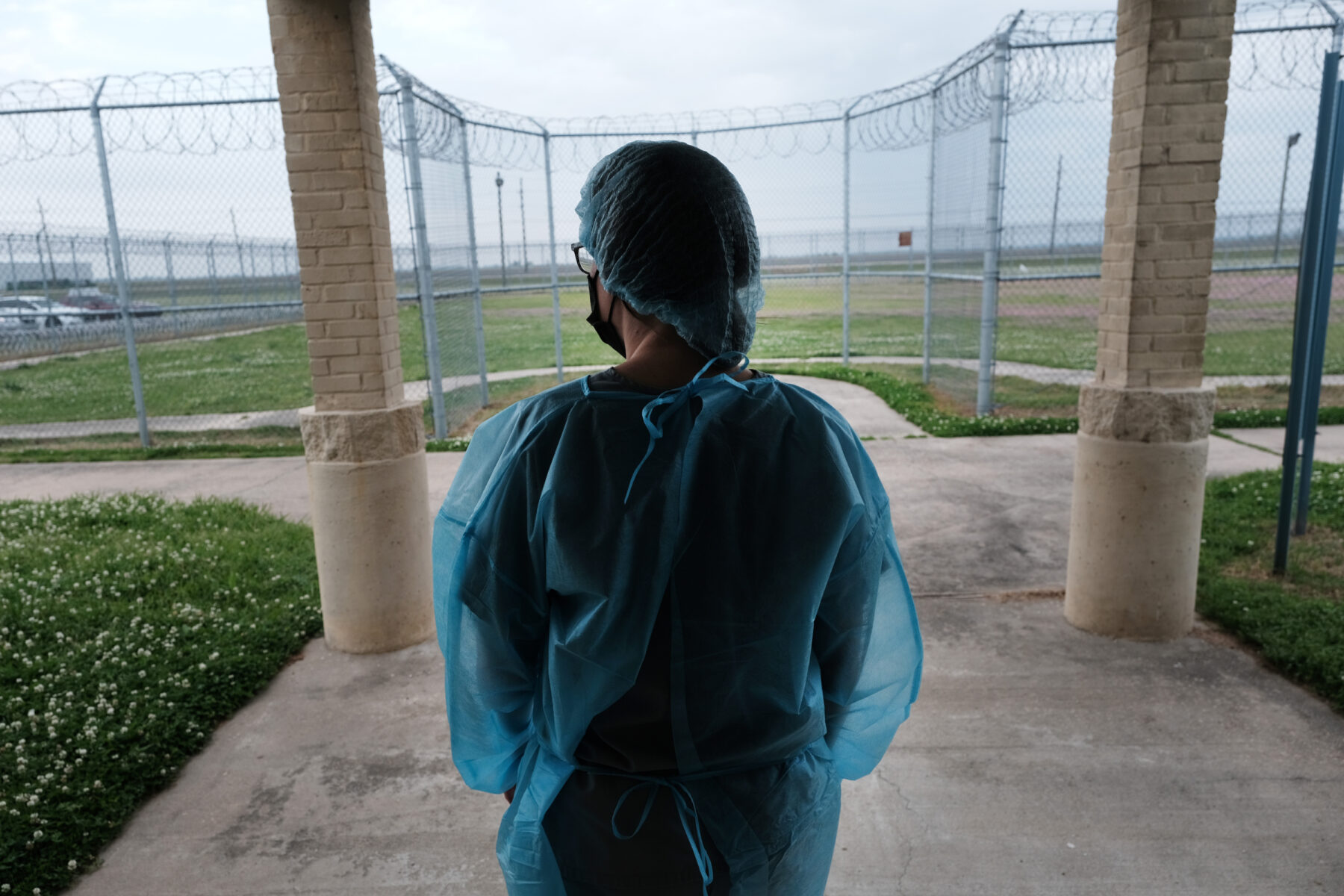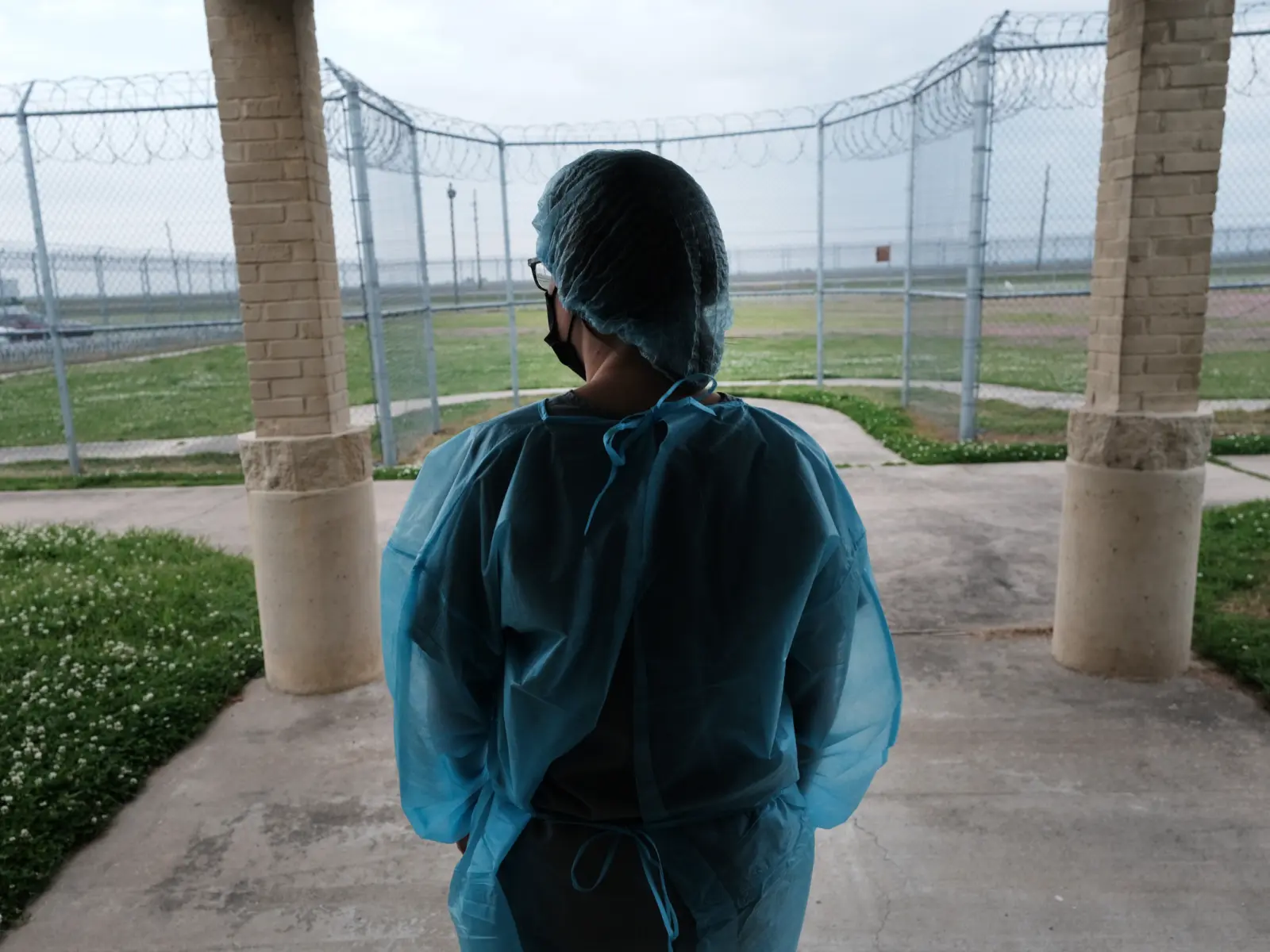Many people would assume that the government keeps accurate records about an issue as serious as deaths in its prisons and jails. But too often, correctional facilities are a black box. In 2019, the federal government stopped reporting on deaths in custody altogether, leaving state agencies and independent research groups to fill the gap.
Texas is one state where the need for oversight is particularly acute. Independent reporting showed that deaths in the state’s prisons rose by 253 between 2019 and 2020, a 74% increase. In 2016, Eva Ruth Moravec, a reporter then covering criminal justice issues, co-founded the Texas Justice Initiative. It has since been used as a resource in numerous research projects, including the UCLA Law Deaths Behind Bars Reporting Project, an effort to track deaths in custody using data that a state law made publicly available. Now, Arnold Ventures (AV) is partnering with Moravec and the Texas Justice Initiative to expand the data’s reach.
Amount deaths rose in Texas prisons between 2019 and 2020
“We think it is important to increase transparency concerning prisons and have more prison oversight,” says Golnar Teimouri, criminal justice research manager at AV. “For lawmakers to be able to craft evidence-based policies, it’s vital for them to understand what’s going on inside prisons — who is dying, how and why — and when government is not adequately providing this information, we need to get it through other channels.”
We sat down with Moravec to talk about how she came to the problem of deaths in custody, the data-gathering and oversight role that the Texas Justice Initiative plays, and the policy implications of the data.
This conversation has been edited for clarity.

Arnold Ventures
What led to your interest in the issue of deaths in correctional facilities and the founding of the Texas Justice Initiative?

Eva Ruth Moravec
For more than 15 years I have been a reporter covering the criminal justice system and state and local government. I found myself asking law enforcement how many times certain incidents had occurred, like officer-involved shootings or deaths in custody. I always had to rely on what law enforcement said. There were not many ways to get that data on my own. Then, in the wake of the death of Michael Brown in Ferguson, Missouri, the Texas legislature passed a law requiring law enforcement agencies to report when they were involved in a shooting. I liked the idea of the public having access to data on how law enforcement is interacting with the public, so I started working on collecting the data, focusing on shootings of unarmed people. At the same time, a colleague did something similar with the custodial death report data set. We decided to combine our databases and build the Texas Justice Initiative, as a way to make those datasets available to the public.

Arnold Ventures
Why is it important for the public to have access to information about what’s happening in prisons and jails?

Eva Ruth Moravec
The public funds law enforcement agencies, and voters elect the people who oversee them, whether they be sheriffs, state representatives, district attorneys, or mayors. They’re all involved in passing policies that affect the way law enforcement operates. The whole foundation is that they provide the service of keeping the public safe, and they’re beholden to the public. But they hold their cards close to their chest in a lot of situations. It seems to me that the public should have access to insights on how agencies and law enforcement officers operate and interact with the public, both people living their daily lives and those who are in custody.

Arnold Ventures
What data are you gathering, and how are you doing it?

Eva Ruth Moravec
We regularly request data from the Office of the Attorney General and from the Texas Commission on Jail Standards by filing requests with the state under the Texas Public Information Act. We started with the idea that we wanted to collect data consistently across the state. There are some law enforcement agencies that might be well funded or have a grant to collect certain data. But we were more interested in having consistency. We deal with data sets that the state is required by law to collect. That way, you can compare an agency with large amounts of resources against, for example, a sheriff’s department with just two total staff.

Arnold Ventures
How have Texas officials responded to your requests?

Eva Ruth Moravec
Because state law has already deemed this data to be in the public purview, we are able to obtain it pretty seamlessly. We usually don’t have to deal with much friction about getting it, unless there are new people at agencies who are unaware of the law. One thing we do is offer some oversight when we’re going through the data sets. Sometimes I can see that a report should have been filed but was not, or that there’s a mistake in a report. In those cases, we serve in a watchdog role. We reach out to those agencies, inform them of the state law, and kindly request that they file their report. There’s no teeth to me doing that. It’s just a strongly but politely worded request. Some agencies respond nicely and tell me that they made a mistake. More often, I don’t hear back from them, but they file or amend the report, reflecting the correction. We’re really looking for completion of the record, rather than playing “gotcha” with agencies. We have this law, so we should be complying with it.

Arnold Ventures
In what ways are you making this data public, and is the public using it?

Eva Ruth Moravec
We put everything that we collect on our website. In addition to the data sets that I mentioned, we also have multiple years of monthly reports that show different characteristics of county jail populations. The jail data is up in PDF format, the way that we get it from the state. We provide the other data sets in an interactive dashboard, where users can filter for different characteristics and download it, free of charge. We get a lot of feedback about people using our data. We hear from researchers and reporters, and our data gets cited in news stories to help put incidents in context. We also hear from lawmakers who want to support additional data collection. Some of the most powerful interactions come from people who have loved ones who are in the criminal justice system and are simply looking for information. Recently, a woman in Canada reached out on behalf of her mentee, who heard that her father had died in prison at least a decade ago. With a little bit of digging, we were able to find her father’s custodial death report and provide this young woman with some information. Being able to help people obtain information they need is very important to me.

Arnold Ventures
What are some of the policy implications of this project?

Eva Ruth Moravec
Our organization doesn’t serve an advocacy role, aside from advocating for transparency and access to public information. However, we do provide the data with the expectation that advocacy organizations, lawmakers, researchers, and reporters can dig in and find places where data-driven changes in policy could reduce the number of people who die in custody. Overdoses are one example, as well as diabetes and other medical conditions that wouldn’t necessarily be fatal to a person who had access to regular health care. Suicides in custody indicate that something may have gone wrong and there’s potential for policy change. Our team has been looking into potential heat-related deaths from the oppressive summer that Texas had last year, because a number of our prisons do not have any air conditioning. If we’re seeing something that stands out in the data, we try to be responsive, whether it’s by telling a reporter or doing a mini-analysis and putting up a blog on our website.

Arnold Ventures
What’s on the horizon for the Death Behind Bars project as you work in partnership with AV?

Eva Ruth Moravec
The support from Arnold Ventures is going to let us dig into a section of the data that we haven’t been able to before — these more potentially detailed summaries of how people die in prisons and jails. We’ll be able to analyze the language that law enforcement uses for certain kinds of deaths. Another thing that we’ll be able to do is compare data on custodial deaths that is reported from the state to the national system through the Death in Custody Reporting Act. We would like to look into that and figure out how complete the national data set is. We are also connected to a larger national project on deaths in custody at UCLA, supported in part by AV, and it’s beneficial to be part of an ecosystem of researchers, reporters, and data analysts who are working on this in different states. We’re excited to connect with other work and serve as a resource for researchers like those at UCLA. It has allowed us to share data better, come up with better practices, and figure out what we can build on our own. We need these solutions. This is data from publicly funded agencies in our democracy, and our power as citizens is to look at the information and have a say about their operations.




















